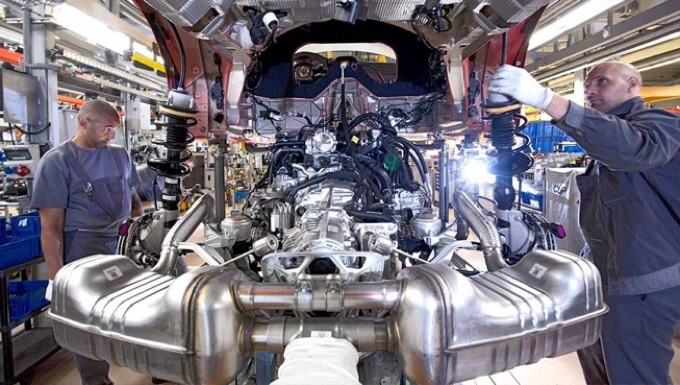

Published in the June 2016 issue of “Die Porsche Kassette”
In 1492 Christopher Columbus sailed west from Europe to what many considered the edge of the world, but he didn’t fall off. Neither did Ferdinand Magellan some 27 years later when he set off to circumnavigate the world, and although he died before finishing, his crew sailed on and proved that it was round.
That belief was held for another 429 years until another Ferdinand set out to prove Magellan and his crew wrong.
That other Ferdinand was Herr Porsche who in 1948 in the small Austrian town of Gmund, put a flat-4 engine in the middle of the now legendary Porsche 356 #1.
From that day on ...

But, what is a flat engine and more importantly why is it flat?
A flat engine, or a horizontally opposed engine has its cylinders arranged horizontally in 2 banks therefore making it literally flat, as compared to the more common “V” or “vertical inline” types of engines.
The flat engine layout has several advantages for a sports car over the conventional designs:
• It occupies less vertical space allowing the car to have a lower profile
• It can be placed lower in the car thus lowering the center of gravity
• It is a very balanced (vibration-free) design because of the opposing motion
• It is easier to “air” cool
• It has lower rotational inertia (less weight on the crank) and less power loss
Initially, Herr Porsche used flat-fours, borrowed from Volkswagen (also his design) and put them into the 356 and then into the 912 models.
But, in 1963 Porsche decided that his cars needed more power so the first flat-six went into the now iconic 911.
It started out as a 2.0 liter, normally aspirated, air-cooled engine, which went through a myriad of changes, modifications and improvements throughout the years. On some of those flat-6s, starting in 1975, Porsche also installed turbochargers.
In 1996 Porsches’s flat-6 engine got water-cooled and went into their brand new mid-engined platform, the 986 Boxster, as a 2.5 liter, normally aspirated power plant.
In 1999 a 3.4 liter version of that engine went into the first water-cooled 911, even though the previous two platforms of the air cooled 911s had sported displacements of 3.6 liters (964 and 993). Flat-6s with 3.8 liters were used in some of the “S” platforms, and on some high-performance models (997 GT3 RSR and 997 GT3 Cup) the displacement eventually went as high as 4.0 liters which is what the factory claims is the largest displacement possible while maintaining optimum efficiency, power output and ease of cooling.
Aside from the flat-4 and flat-6 engines Porsche also built several other flat power plants, exclusively for racing:
• 1.5L and 2.0L flat-8 in the 718 (1961 and 1962)
•2.0L and 2.2L flat-8 in the 907 (1967)
•3.0L flat 8 in the 908 (1968)
•4.5L flat-12 in the 917 (1969)
•5.0L flat-12 in the 917 (1970)
•5.4L flat-12 Twin-Turbo in the 1973 Can-Am 917/30 with the following specs:
• 1,580 HP
• 0-60 mph in 2.1 seconds
• 0-100 in 3.9 seconds
• 0-200 in 13.4 seconds
• Top speed in excess of 240 mph
And even though Porsche made earth-shattering changes for 2017 by announcing that it was eliminating the normally-aspirated flat-6 engines in both the Boxster and Cayman platforms and exclusively offering 4-cylinder [gasp!] turbocharged engines ...

... at least they’re keeping them flat! ...

... and now we wonder what will they sound like?
In order to make them sound more like a Porsche and less like a Subaru Sti flat-4, Porsche amplifies the sound by using a resonator and an electric valve which pumps the sound into the cabin. At least it’s real sound, albeit amplified, and not a fake engine sound track through the car’s speakers as some other manufacturers such as VW with the GTI and BMW with the M5 have done :(
These new blown flat-4s are being offered with gobs of power and torque, but ...
... The Symphony in flat-6 will be missed.
Rest in Peace, flat-6.
For more information on Porsche flat engines and more, please visit my website:
www PedrosGarage.com.
Happy Porsche’ing,
Ⓒ2016 Technolab / PedrosGarage.com


